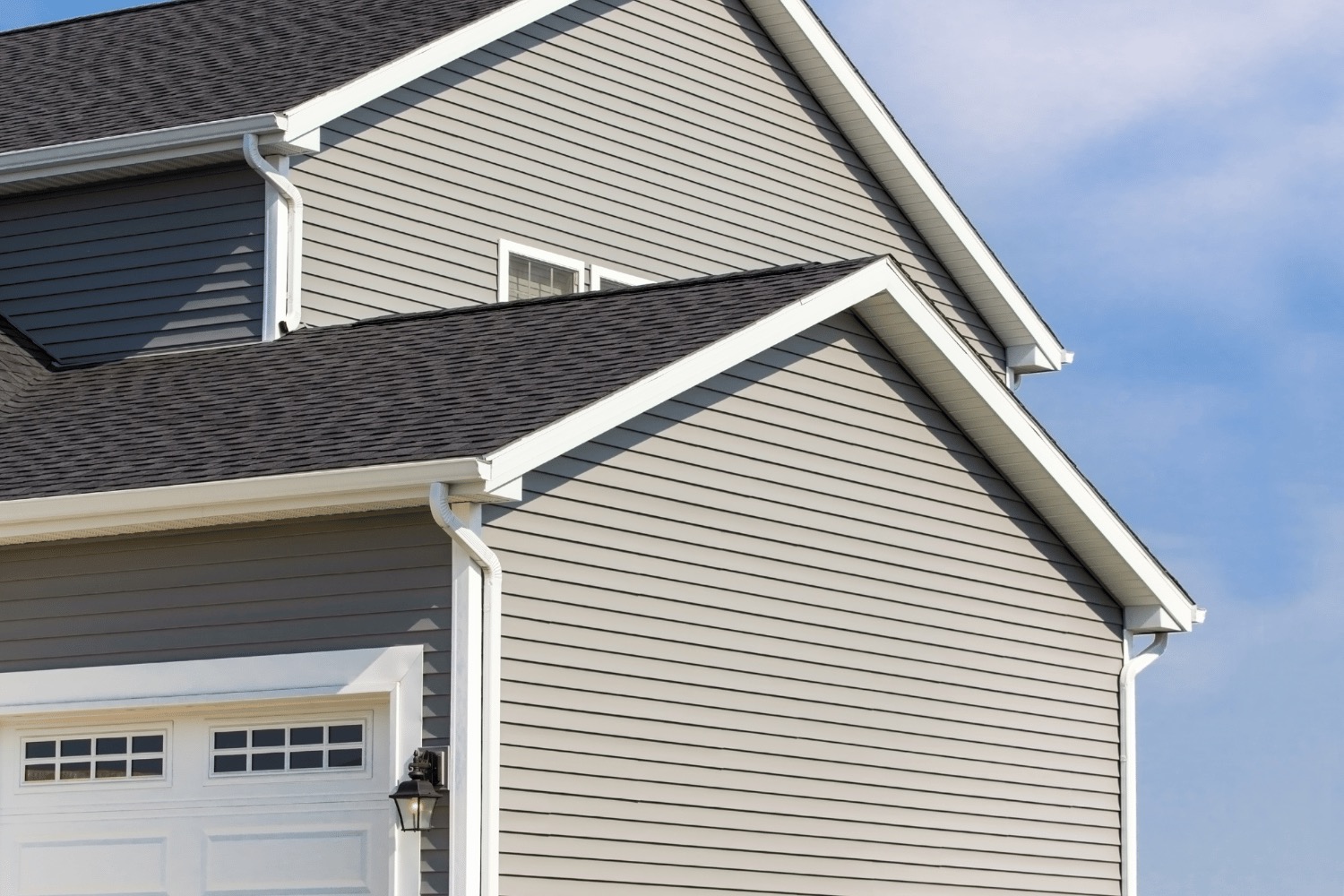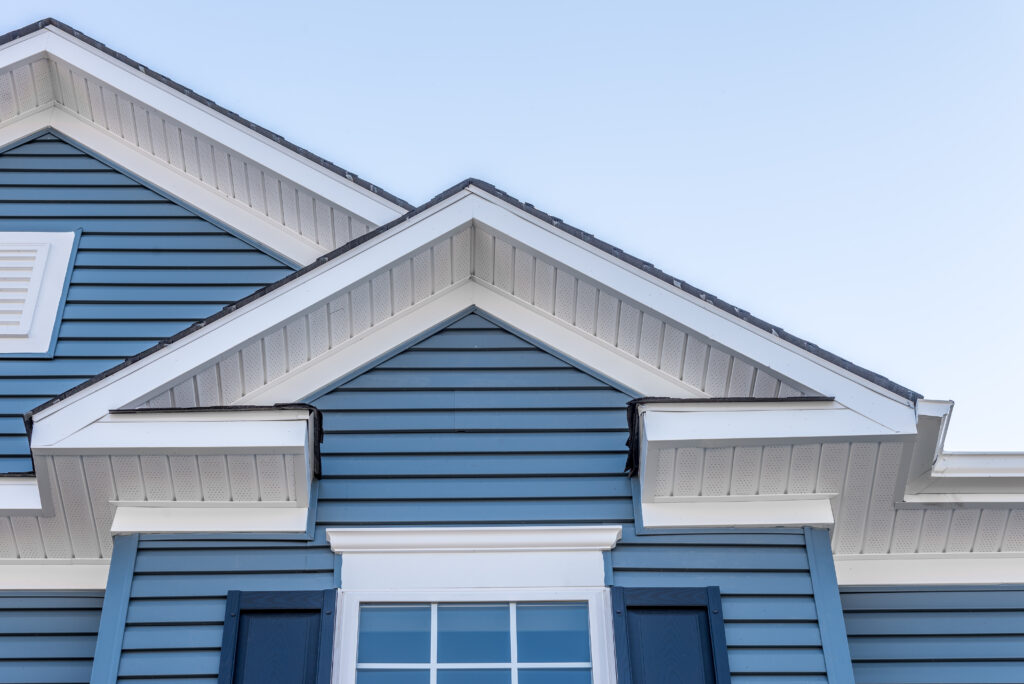Morris Siding Contractor with Exceptional Service and Top-Notch Materials
Morris Siding Contractor with Exceptional Service and Top-Notch Materials
Blog Article
The Essential Overview to the Various Kinds Of Exterior Siding and Their Unique Benefits
In the world of home renovation, picking the best siding is a vital decision that influences both visual appeal and functional performance. With so numerous options to consider, which home siding material genuinely stands out for your certain project?
Timber House Siding
Timber home siding, a popular selection for household exteriors, provides an ageless visual that integrates natural elegance with structural integrity. This home siding product is readily available in various designs, consisting of clapboard, shingles, and board-and-batten, permitting homeowners to customize their appearance to match their layout preferences. Timber house siding is usually crafted from long lasting types such as cedar, redwood, or pine, which are recognized for their durability and capability to hold up against ecological stressors.
Among the main benefits of wood exterior siding is its outstanding insulation residential properties, which can add to power efficiency and reduced heating prices. Additionally, timber exterior siding is biodegradable, making it an ecologically friendly alternative when sourced sustainably. Routine upkeep, including paint or staining, can lengthen its lifespan and enhance its look, allowing property owners to protect the all-natural charm of the wood.
However, prospective drawbacks include sensitivity to bugs, rot, and climate damage, requiring appropriate therapy and maintenance - morris siding contractor. Despite these problems, when correctly looked after, timber home siding can supply a sturdy and stunning remedy that boosts the character of a home while using a warm, inviting environment

Vinyl Siding
Vinyl house siding has emerged as a leading choice for house owners looking for a low-maintenance exterior alternative that incorporates longevity and price. This flexible material is crafted from polyvinyl chloride (PVC), making it immune to various weather, consisting of moisture and UV rays. Therefore, plastic home siding does not warp, rot, or discolor, making sure resilient visual allure.
Among the key advantages of vinyl home siding is its comprehensive array of styles and colors, enabling house owners to achieve the preferred appearance for their home without the need for frequent repainting. In addition, vinyl home siding is very easy to install, which can dramatically reduce labor expenses during construction or restoration jobs.
Vinyl house siding likewise adds to power effectiveness. Several alternatives attribute insulation backing, which enhances thermal performance, aiding to maintain comfortable interior temperature levels and potentially lowering energy expenses. In addition, its smooth surface area helps with very easy cleansing, requiring just routine washing with a yard hose to remove dirt and debris.
Fiber Cement Exterior Siding
Fiber concrete house siding has actually gotten grip among home builders and house owners alike as a result of its amazing combination of longevity and visual flexibility. Composed of a combination of sand, cellulose, and cement fibers, this home siding alternative is crafted to withstand extreme weather, including high winds, heavy rain, and temperature level changes, making it a resilient their website choice for residential outsides.

One of the main benefits of fiber cement house siding is its resistance to pests, such as termites, and its non-combustible nature, offering boosted fire safety and security. morris siding contractor. Furthermore, it is readily available in a large variety of designs, appearances, and colors, permitting home owners to accomplish their preferred visual without sacrificing performance
Another advantage is its low upkeep needs; fiber concrete exterior siding commonly requires paint or discoloration every 5-10 years, which is much less regular than other products. Additionally, its long life adds to a lower general price of possession, as it lowers the requirement for regular repair work or replacements.
Inevitably, fiber cement house siding represents an exceptional financial investment for those seeking a resilient, appealing, and flexible outside choice, combining both form and function to improve the home's curb allure.
Steel Exterior Siding
The appeal of steel siding exists in its robust sturdiness and modern-day aesthetic allure, making it a preferred option for contemporary design. Offered in materials such as aluminum and steel, metal siding uses a variety of colors and finishes, allowing homeowners to attain a personalized appearance that enhances their design vision.

Energy efficiency is an additional considerable advantage, as many steel siding items are developed with insulation alternatives that help regulate indoor temperatures. This can lead to lowered power prices gradually. Furthermore, metal siding is frequently recyclable, making it an eco-friendly choice for sustainability-minded homeowners.
The setup process for steel home siding can be reasonably straightforward, resulting in a quicker turnaround time for construction jobs. Generally, steel siding incorporates performance and design, making it a sensible choice for those looking for a visually appealing and long-lasting outside coating.
Block and Stone House Siding
Brick and stone house siding sticks out as a classic choice that boosts the visual beauty of any kind of home. Recognized for their longevity and low maintenance, these materials supply a phenomenal roi while raising the building's curb allure. Readily available in numerous shades, textures, and patterns, brick and rock can be tailored to fit varied architectural designs, from standard to modern.
Among the key benefits of block and stone siding is their energy efficiency. Both materials possess natural shielding properties that aid regulate indoor temperatures, possibly lowering cooling and heating expenses. Furthermore, they offer superior fire resistance compared to various other siding alternatives, adding to boosted security.
Another benefit is their longevity. Block and stone can last for years, typically requiring very little upkeep beyond occasional cleansing. Unlike wood house siding, they are resistant to pests and rot, making sure a reference resilient exterior that holds up against the components.
Conclusion
In summary, the choice of exterior siding dramatically influences a home's visual appeal, power performance, and maintenance needs. Each kind of home siding-- whether timber, plastic, fiber concrete, steel, or brick and stone-- offers special advantages customized to numerous homeowner preferences and ecological problems. Recognizing these alternatives makes it possible for educated choices that boost both the resilience and aesthetic beauty of residential outsides. Ultimately, selecting the appropriate exterior siding is essential for achieving a balance between capability and layout in property design.
One of the main benefits of wood siding is its superb insulation residential or commercial properties, which can add to energy effectiveness and lower heating costs. Additionally, wood house siding is naturally degradable, making it an ecologically friendly choice when sourced sustainably.One of the primary benefits of steel exterior siding is its resistance to various ecological variables.Power performance is one more substantial benefit, as many steel home siding products are developed with insulation alternatives that help regulate indoor temperature levels. Each kind of home siding-- whether wood, plastic, fiber metal, cement, or block and stone-- uses one-of-a-kind advantages tailored to different house owner preferences and ecological problems.
Report this page